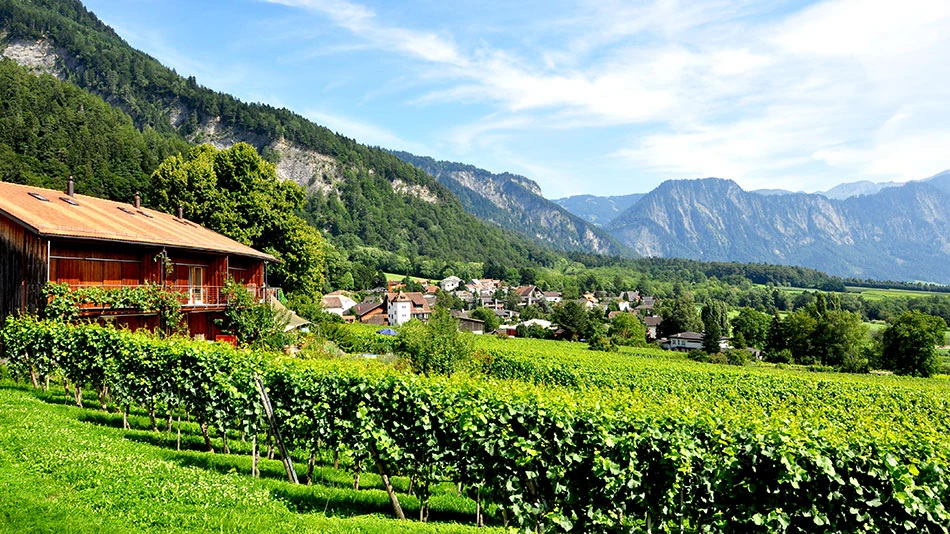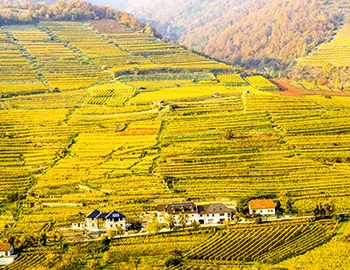Graubünden
Graubünden: Mecca for Burgundy varieties
Nowhere in Switzerland has a better ratio of first-class Pinot noir crops to cultivation area than Graubünden. The ageing philosophy of vintners here leaves its imprint even more than the subtle differences in terroir from one vineyard village to the next. In recent years, three Pinot types have established themselves here: the light and sweet Herrschäftler for everyday drinking, the selections aged in large wooden barrels or used barriques, and of course the premium selections of individual estates matured in barriques.
Sparkling wines from Graubünden
White wines from Graubünden
Red wines from Graubünden
Graubünden is one of the few wine growing cantons in the German-speaking part of Switzerland which has seen steady growth in cultivation area in recent years. In 1990, only 300 hectares were planted with vines; today, this figure is 425 hectares. The reason for this boom is the resounding success of the Herrschäftler Pinot Noir, which, in its best form, combines alluring fruit, juicy fullness and Burgundian finesse.
The church as a pioneer of viticulture
The first wines vinified in this part of the Rhine valley are suspected to have been white wines. At the time when viticulture in Graubünden was first mentioned in writing, in a testament by Bishop Tello of Chur dating from 765 CE, white varieties like Elbing, Veltliner or Completer may have been exclusively cultivated here. Completer was first mentioned in 1321 in a church document. It received its name because monks drank this wine with the evening prayer, called “complete”. Pinot Noir was first introduced here during the 30 Years War (1618 to 1648) by the Bretonic Duke of Rohan.
High-standing white specialties
Although white wines are only grown on 20 percent of the cultivation area, Chardonnays, Pinot Blancs and Sauvignon Blancs in particular achieve a high level of quality here, even in international terms. Completer, with its highly pronounced acidity, has traditionally been oxidatively aged for years in large casks. Now, cushioned with a few grams of residual sugar, it is experiencing a small renaissance with a fresh and fruity style.
The wine-growing villages of Graubünden line the eastern side of the Rhine valley. Vines here grow between 500 and 600 metres above sea level. In higher locations, primary rock soils predominate, with high slate or lime proportions. In the valley flats, the soil is heavy, with a high clay content and gravel. The foehn, an exceedingly warm Alpine autumn wind, plays an important role in the final stage of maturation; it is thus also called “traubenkocher” (grape cooker) in Graubünden.













